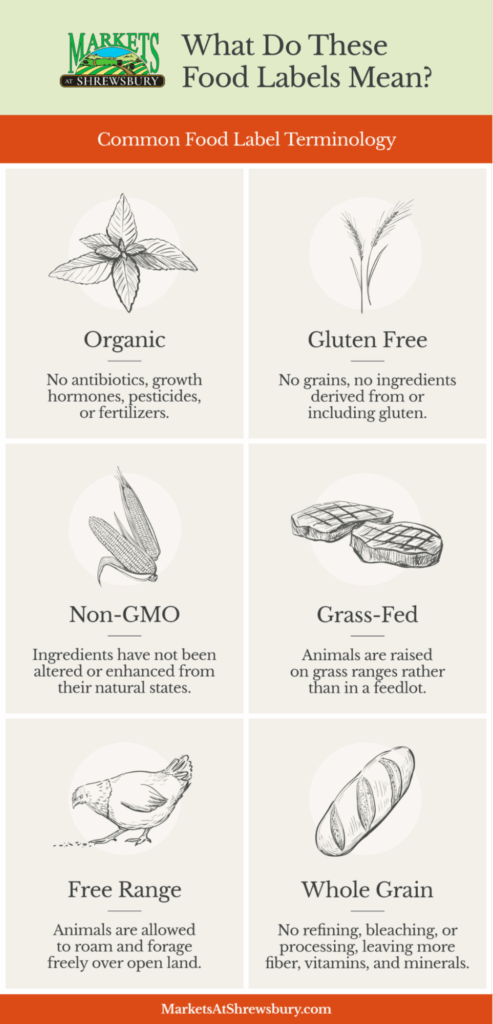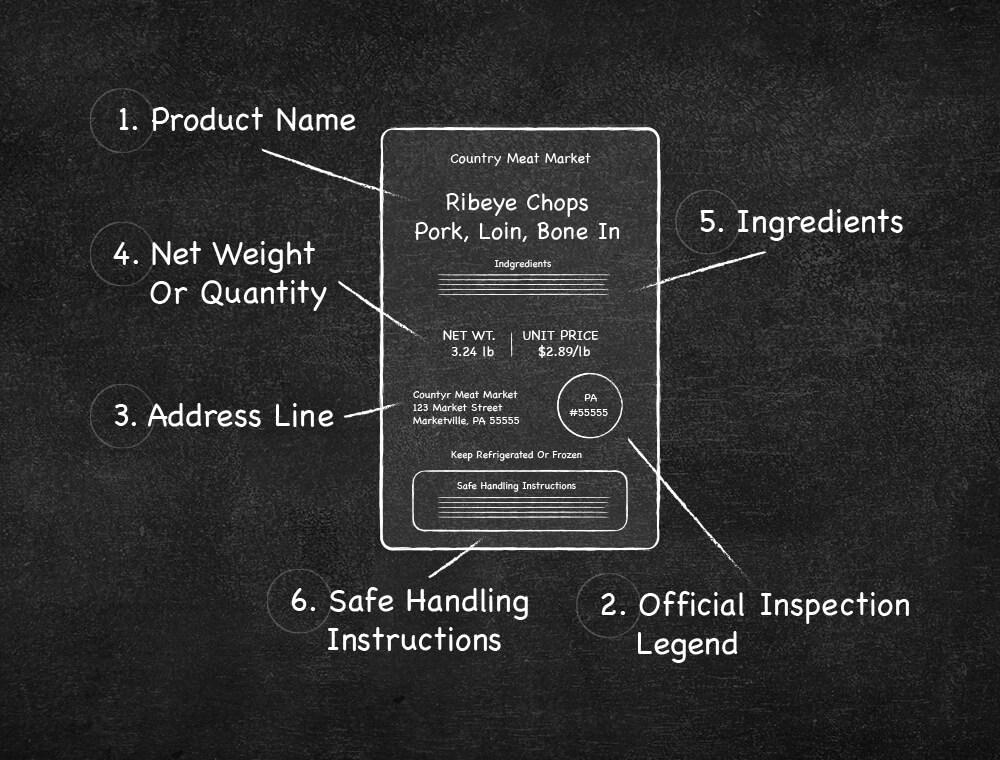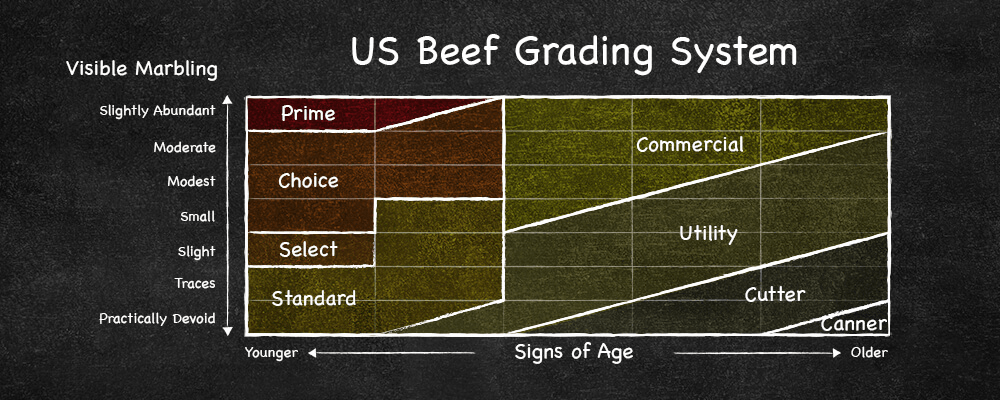How to Read Dietary Labels: A Beginner’s Guide to Shopping Smarter
We’ve all had a moment where we’re standing in the grocery store and the list of ingredients on the label goes on forever. Most consumers can’t pronounce or begin to understand long lists of jargon.
As modern day consumers, we’ve been trained to skim past the wordy terms and conditions online. But it’s vital not to skip understanding dietary labels for food and meat, whether you’re shopping at the grocery store or searching for organic choices at your local farmers market.
The experts at the Markets at Shrewsbury have offered customers like you genuine, farmers market quality without the extra processing found in most grocery stores for over 20 years. In this blog, we’re going to dive deep into helping you understand food label definitions and meat labels with nutrition education.
Why Understanding Food Label Definitions Matters
You wouldn’t go driving without a map or take medication without an explanation from a pharmacist.
The Nutrition Facts label lets you know what you’re putting into your body on a daily basis and it’s critical for maintaining your health. In fact, studies show that processed food can cause heart disease, weight gain, and colorectal cancer.
The Nutrition Facts label is overseen by the U.S. Food and Drug Administration (FDA) to protect consumers with the first mandate written into law under the Nutrition Labeling and Education Act of 1990. The U.S. The Department of Agriculture (USDA) also plays an essential role in labeling standards for common household foods like meat, poultry, and egg products.
When shopping, it’s often true that the shorter the ingredient list, the healthier the food option. Why? Because these foods typically contain less processed ingredients and offer stronger nutritional value.
The FDA manages food labels as a nutritional roadmap, helping you make choices that support a long, healthy, and happy life.
Decoding Common Food Label Definitions and What They Mean

Overwhelming fresh food labels don’t have to be an obstacle to finding the right options. We’re here to take the mystery out of interpreting dietary labels by breaking down common terms from the FDA and USDA. In this section, we’ll define the most common healthy food labels so you can shop with confidence for yourself and your family.
1. Organic
The USDA has specialized rules that a food producer must meet to use the organic label. Animal products cannot be given antibiotics or growth hormones and farmers can’t use conventional pesticides or fertilizers made with synthetic ingredients for plant growth.
There are three main categories for organic labels:
100% Organic: These products must be made from entirely organic ingredients.
Organic: At least 95 percent of the product’s ingredients must be organic.
Made with Organic ingredients: At least 70 percent of the ingredients must be organic.
2. Gluten-Free
Gluten is a naturally occurring protein found in common household ingredients like wheat, barley, and rye that helps give food its shape and texture. Unfortunately, illnesses like celiac disease and gluten sensitivity can cause digestive discomfort for some consumers.
The FDA protects Americans with this dietary restriction with the gluten-free label. The food must be inherently gluten-free or not have any gluten-containing grains. Or, any ingredients derived from a gluten-containing grain must have the gluten processed and removed with less than 20 parts per million.
3. Non-GMO
A Genetically Modified Organism (GMO) is a food that has altered DNA with modern technology. Although organizations like the World Health Organization feel that these modifications are safe, many consumers opt for Non-GMO foods that have not been altered or enhanced for pure nutrition.
4. Grass-Fed
Grass fed is a USDA term that refers to animals raised primarily on open ranges rather than a feedlot. In other words, the animals were able to graze in a natural setting. If an animal was grain fed, it means that the animal was most likely raised in a feedlot and has less nutritional value.
5. Free Range/Cage Free
The free range or cage free label refers to animals that are not contained in cages and are allowed to roam and forage over a large area of open land. USDA food labeling requires that producers demonstrate animals have access to the outdoors without confinement.
However, this USDA regulation is controversial. Some food producers work around the requirement by keeping animals closely confined, though not technically in cages.
6. Whole Grain/Wheat Grain/Multigrain
Whole grain foods like brown rice, corn, and whole wheat bread have more fiber, vitamins, and minerals than processed white grains. The FDA classifies whole grains as food products that contain the bran, nutrient-rich germ, and endosperm of grains such as wheat, oats, or rice.
Whole wheat is one type of whole grain. It means that the grains in the product haven’t been refined or processed and contain a healthy amount of vitamins and nutrients.
Multigrain means that the food product contains more than one type of grain. It’s often confused with whole grain and whole wheat because it sounds like a similar term, but in reality, it isn’t necessarily healthy or pure like the other two options. Selecting the right whole grain solution for your family can help you to stock your pantry with long-lasting, delicious, and nutritious food options.
7. Additional Food Label Terms
When it comes to reading various types of food labels, there are countless extra terms that can make healthy shopping confusing and common questions like “What does free mean on a food label?” To help you shop with confidence, here are a few key definitions fresh food labels that can guide you toward smarter choices:
- Artificial Flavors vs. Natural Flavors: Both natural and artificial flavors are made in a laboratory. Artificial flavoring comes from synthetic ingredients rather than natural chemicals from whole food sources.
- Fat-Free, Sugar-Free, Salt-Free: Labeling a food as free of a certain nutrient means it has none or an inconsequential amount, like 0.5 grams or less per serving.
- High-in: High-in or rich-in means that the food has 20 percent or more of the recommended daily value for that nutrient per serving.
- Light: Light refers to the amount of calories and is often compared to a reference food (i.e., ranch dressing vs. light ranch dressing).
- Low-Fat, Low-Sugar, or Low-Sodium: If an item is labeled low, it typically means that you can eat several servings without exceeding the recommended daily limit.
- Natural: The FDA has no official definition for natural, but typically counts foods that do not have added color, artificial flavors, or synthetic substances.
- No Trans Fats: This label means that a product has less than half a gram of trans fat per serving—the type of unsaturated fat that can negatively impact LDL cholesterol levels.
- Sell By | Use By | Best if Used By: The “sell by” date is a reference point for stores, telling them how long to display the product for sale. The “use by” date is the last recommended date for the consumer to eat the product at peak quality. The “best if used by” label is the recommended date for best flavor or quality; it’s not a purchase or safety date.
How to Crack the Code on Understanding Meat Packaging Labels
USDA requirements have created a meat label system that helps consumers understand the source and inspection of their meat.

Understanding the anatomy of a USDA meat label sticker can help you handle it safely and confidently:
- Product Name: The USDA-approved definition of what product is in the package.
- Official Inspection Legend: Each label features a unique number identifying the federal or state processing establishment.
- Address Line: The address of where the product was inspected.
- Net Weight or Quantity: Found on pre-packaged meat; not typically present at a local deli counter.
- Ingredients: Lists all ingredients, including the eight main allergens.
- Safe Handling Instructions: Explains how to safely transport, store, and consume raw or partially cooked meat.
USDA Grades of Meat

The USDA also provides standards of quality for cuts of beef.
There are 8 main terms for identifying meat grades that can help you choose the right type for your meal:
- Prime
- Choice
- Select
- Standard
- Commercial
- Utility
- Cutter
- Canner
These beef labels typically determine the quality of the meat based on the marbling (fat distribution) and the age of the animal. Both of these factors affect tenderness, juiciness, and flavor profile.
Still wondering what meat to choose for your next family dinner or event? Stop by Country Style Fresh Meats to chat with a butcher and find the healthiest, natural option for your family.




